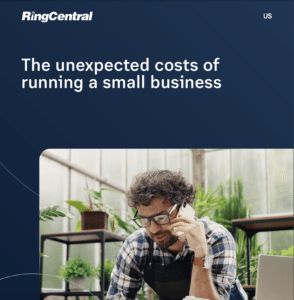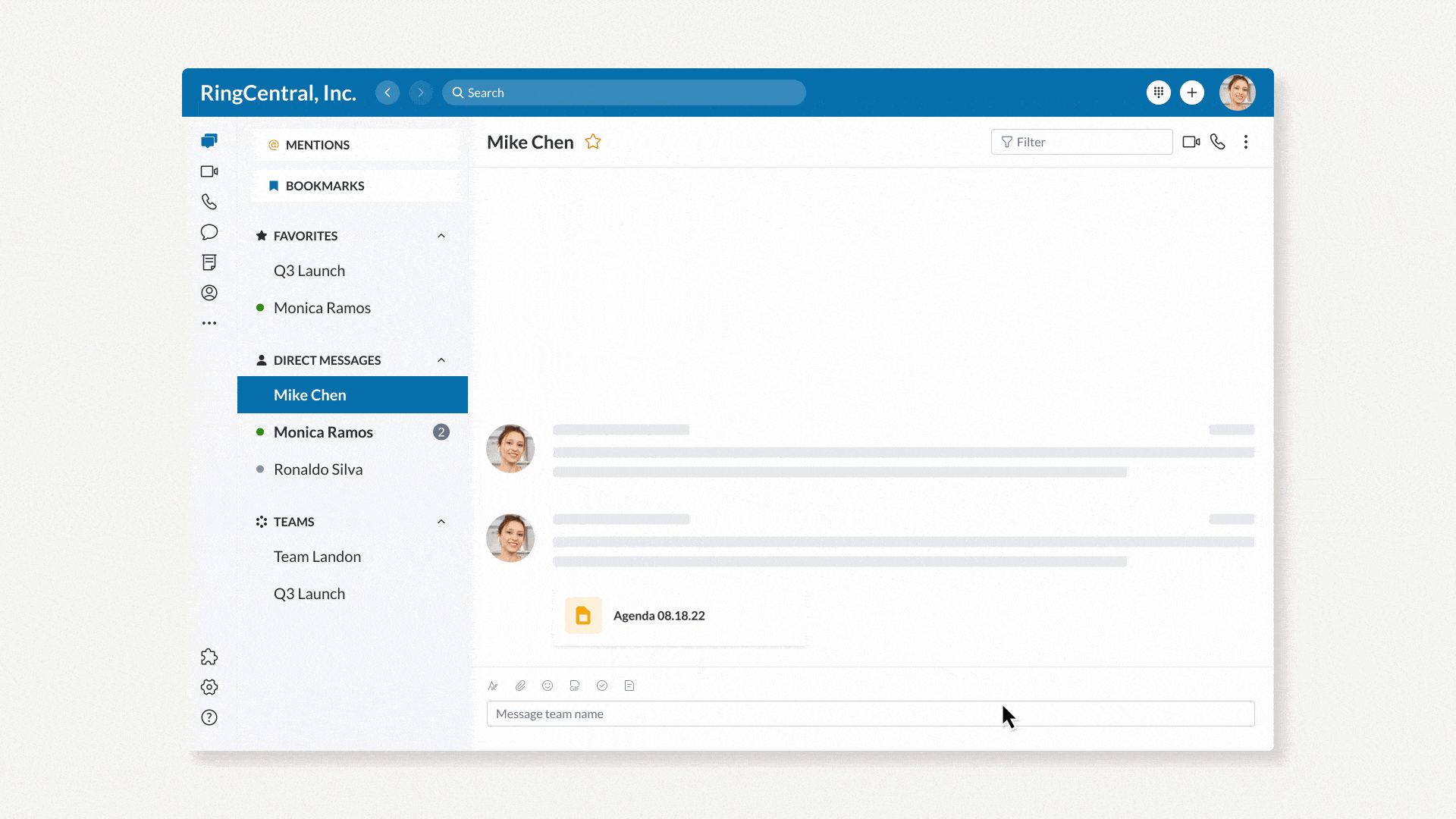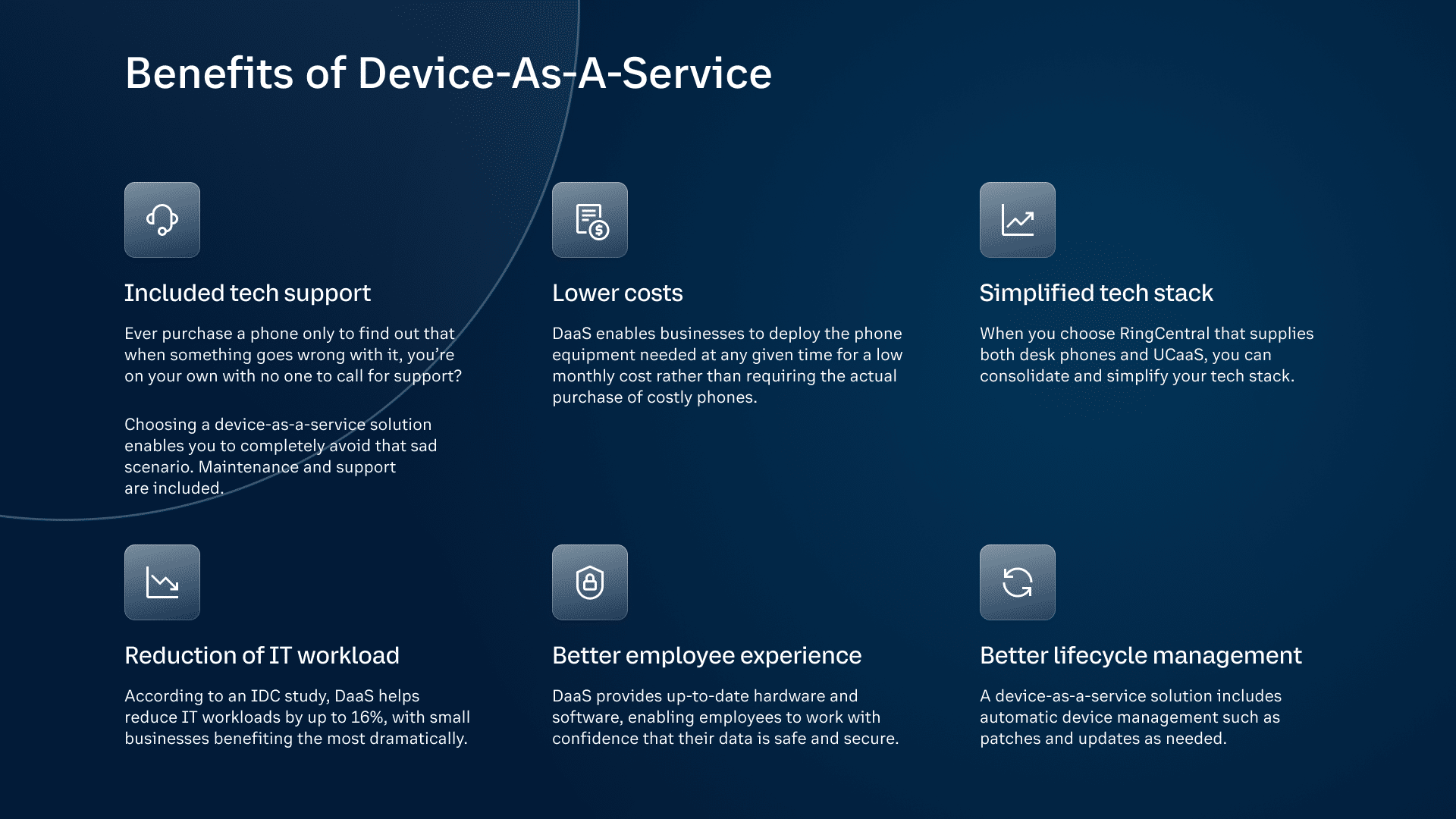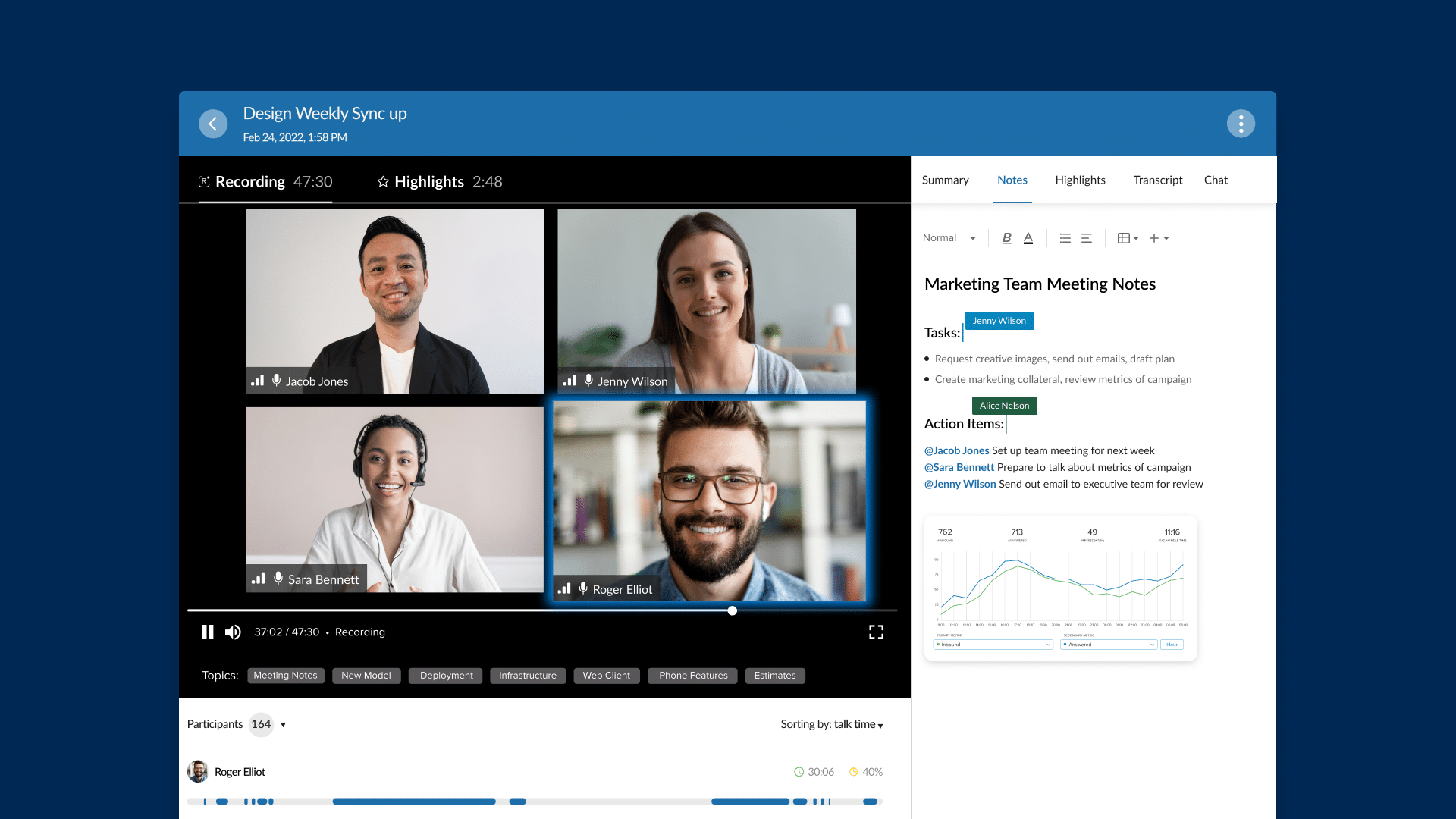Need some money-saving ideas for your small business? You definitely aren’t alone. In a world of rising interest rates, high inflation, and shifting labor pools, Guidant Financial’s State of Small Business 2023 Report found that most small business owners reported increased prices (27%), loss of revenue (15%), and increased wages (13%) as the top three ways the economy has impacted their businesses.
According to Score, cash flow (22%) and costs (19%) are the top two challenges identified by small business owners.
Saving money as a small business means that you will have capital on hand to reinvest in future business growth. Finding money-saving tips for small businesses is one of the most consistently effective ways of increasing profits.
Every business is different, but many money-saving tips for small business apply across the board:
At RingCentral, we ❤️ small businesses. So we’ve rounded up six money-saving strategies for a small business that you might’ve missed:
- Bundle technology
- Optimize your budget
- Identify hidden costs
- Embrace remote work
- Negotiate with vendors
- Outsource non-core functions

Free eBook: Hidden costs of running a small business
Every dollar counts when you run a small business. Learn where you’re losing money—and how to stop those costly leaks—in this helpful eBook.
6 money-saving tips for a small business
1. Bundle tech: The power of consolidation

Bundling technology services together is a great small business money-saving strategy for small businesses. Instead of paying for each service separately, you can get all of them in one place, usually for a lower cost.
This approach offers several benefits, including:
- Streamlined operations
- Reduced expenses
- Simplified vendor management
- Potential discounts
Suppose you bundled all your communication efforts into one platform. With one service, you can centralize phone, email, social, and fax communications.
This approach streamlines operations by making all information centrally accessible and instantly transferable across platforms.
Bundling your communications tech reduces expenses by turning several fees into one bill. A unified provider is likely to offer you discounts compared to alternatives, due to a lower overall cost of providing the service.
A unified approach simplifies vendor management. Instead of handling three or four different systems, you and your team can easily manage communications via one centralized platform. This saves time on training new employees and staying up-to-date.
The key to bundling effectively is to choose a UCaaS provider that specializes in technology bundling to meet small businesses’ specific needs.
🌎Real-world example: The city of Williamsburg, VA, was able to decrease their capital expenditure with an all-in-one communication system! Read their story
2. Optimize your budget: CapEx vs OpEx

Operating expenditures, or OPEX, are regularly occurring expenses that you need to keep your business running on a daily business. This includes things like employee wages, office supplies, and disposable equipment.
Capital expenditures, or CAPEX, are major, long-term expenses that are usually made on a more one-off basis. Examples of this type of expenditure include building a factory, buying new equipment, or acquiring a patent.
When it comes to saving money, small businesses today prefer OpEx over CapEx because OpEx enables businesses to spread their expenses over a period of time rather than cough up major dollars investing in capital expenditures. To preserve capital and maintain flexibility, many companies choose to handle their communications needs with Device-as-a-Service (DaaS) models, which allow businesses to use the latest technology without an exorbitant upfront cost.
For example, RingCentral’s DaaS offering enables small businesses to achieve:
- Lower costs
- A simplified tech stack
- Better device lifecycle management
- Better employee and customer experiences
- Reduced IT load
🌟Now available from RingCentral: Desk phones as a subscription service!
3. Identify hidden costs: Uncover saving opportunities
Hidden costs of running a small business may go unnoticed for months or years. Some common hidden costs of running a small business include:
- Maintenance
- Licenses
- Software or hardware upgrades
- Compliance issues
- Integration and interoperability
- Scaling issues
For better money saving as a small business, track all of your expenses with one centralized tool, whether it is something as simple as a spreadsheet or a more detailed software program. Group costs by type and category, and look for ways to save money by consolidating where you can.
For example, you might find that you keep hiring separate contractors to do repairs on your equipment. Consider negotiating a retainer agreement with a single contractor, which may be less costly in the long run.
Choose SaaS options, which eliminate much of the compliance, security, and maintenance issues you may be having with disparate vendors for different services.
🌎Real-world example: Corrigan Moving Systems saved $12,000 a month by streamlining their communications! Read their story
4. Embrace remote or hybrid work: Use less office space

If your business model allows it, remote work is a great way to reduce costs such as office space expenses and utility bills. Many businesses now operate on either a hybrid model, with smaller offices, or even on a completely remote model.
If you decide to eliminate costly office overhead in favor of remote work, remember that communication and collaboration tools are even more important for remote workplaces than they are for traditional offices. Be sure to choose an effective cloud-based solution for remote communication and project management.
5. Negotiate with vendors: Get more for your money
In many cases, vendors will be happy to agree to a cheaper per-unit price of their product, if you are willing to commit to a long-term or bulk agreement. If you already have a long history with a vendor, they may be even more open to the suggestion.

6. Outsource non-core functions: Do what you do best
Small businesses often do best when they focus on what they do best: their core business offering. Non-core functions, such as internal accounting, IT support, or marketing, may be done better by third parties.
This is a situation where caution and careful weighing of options is important. A third party will not know your business as well as you know it, so there is a certain cost associated with getting them up to speed. However, over the long term, you may find that upfront costs for outsourcing can be recouped fairly quickly in terms of time saved, which you can use to focus on what you do best.
Money-saving as a small business: Start here
Saving money matters. It is often easier to increase profits by cutting costs than by increasing revenues. The key takeaway here is to bundle and organize where you can. Look for areas where current costs are repeated, and explore how you can combine or eliminate costs.
As a provider of an industry-leading communications platform, RingCentral helps small businesses save money by bundling their entire communications system into a single platform. This lowers communication and organization costs, while centralizing information into one user-friendly hub.
Originally published Aug 24, 2023, updated Apr 16, 2024




